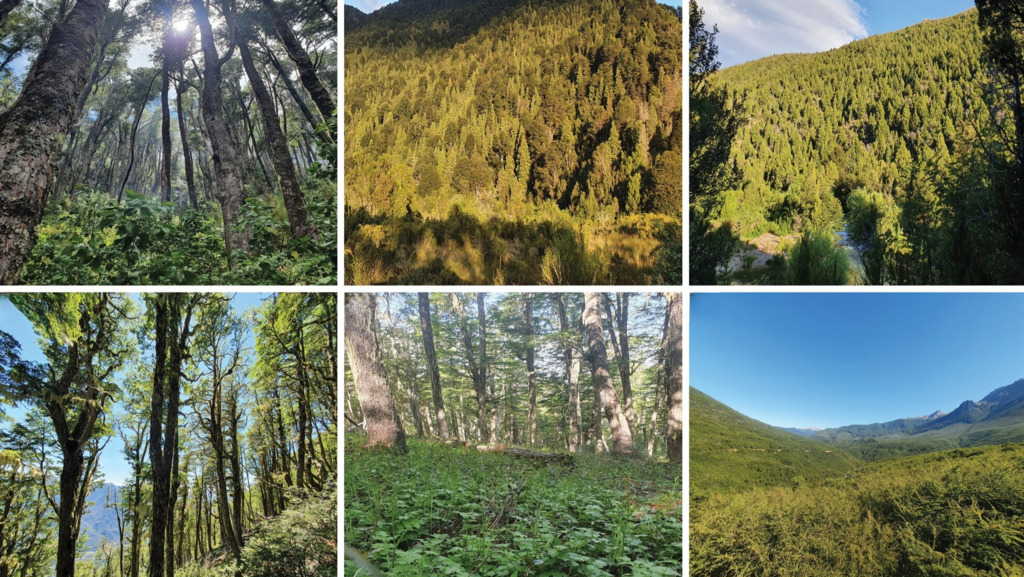Editors' Choice paper for the first quarter of 2025

The Vegetation Classification and Survey (VCS) Editors’ Choice paper for the first quarter of 2025 explores the relationship between plant communities and key environmental drivers in the Andes of northwest Patagonia, Argentina, and evaluates the applicability of traditional phytosociological definitions to this region.
Titled “Floristic patterns in the Andes of northern Patagonia’s forests, Argentina: towards integrating ecological responses with expert-based and unsupervised classification methods,” the paper is authored by Natalia Zoe Joelson, Alois Simon, Friedemann von Lampe, Gabriel Ángel Loguercio, Stefan Zerbe, Christoph Leuschner, and Helge Walentowski.
The research team collected 141 vegetation plots of 100 m2 with stratified systematic sampling, aiming for good representation of both elevation and moisture gradients covering the different parts of the study. Based on this sound sampling, the authors conducted comprehensive statistical analyses, including unsupervised classification, ordination, indicator species analyses and ANOVAs to compare the properties of the derived communities. The authors distinguished six community types, each well characterised by diagnostic species, and matched them with described phytosociological associations.
Why did the journal's Chief Editors choose this particular paper?
“Since South America is still poorly covered by plot-based vegetation studies in general and by formal syntaxonomic studies in particular, this paper is an important contribution to widening the state of knowledge on the vegetation in Patagonia and South America in general.”
Image caption: Illustrative photographs of the classified vegetation units: A) Broadleaved montane forest (Myrceugenio-Nothofagetum dombeyi Esk. 1968); B) Mixed montane forest (Austrocedro-Nothofagetum dombeyi Esk. 1968); C) Coniferous montane forest (Gavileo-Austrocedretum chilensis Esk. 1968); D) Woody subandean forest (Macrachaenio-Nothofagetum pumilionis Esk. 1973); E) Herbaceous subandean forest (Anemono antucensis-Nothofagetum pumilionis Oberd. 1960); F) Shrublands (Lomatio hirsutae-Nothofagetum antarticae Esk. 1969). Photo credit: Natalia Joelson.
To follow the latest publications, news and highlights from VCS, we invite you to subscribe for the journal’s newsletter by using the Email alert field on this website’s homepage, and follow the journal on X (Twitter) and Facebook.